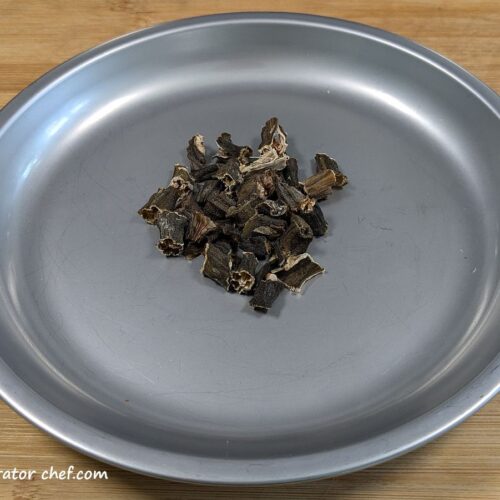
How to Dehydrate Okra
This is our step-by-step guide on how to dehydrate okra. Dehydrating canned cut okra is real easy to do. Just like in our everyday cooking, many of our dehydrated camping meal recipes use it. So it just makes good sense to dehydrate what you use day-to-day and have it on hand in your pantry for when it’s needed and to expand your list of foods that can be dehydrated while saving time on prep work. It’s also one of the best foods to dehydrate for long-term storage, as it keeps well and rehydrates quickly.
Equipment
- Removable mesh screen insert (one for each dehydrator tray)
- Common kitchen tools (including cutting boards, chef's knife, strainer, can opener, etc.)
- Canning jars with tight-fitting lids
- Desiccant packets for moisture control (optional)
Ingredients
- several cans cut okra (no-salt or low-sodium products preferred)
Instructions
Process the Okra
- Drain the salty canning liquid from canned okra.several cans cut okra
- Rinse off the okra with lukewarm water to help remove residual canning liquid.
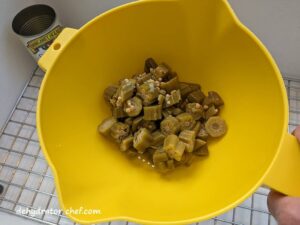
Prepare the Dehydrator
- Layer the okra pieces onto the removable mesh screen inserts; one 15-ounce can of okra will fill one Nesco 13.5-inch round dehydrator tray.
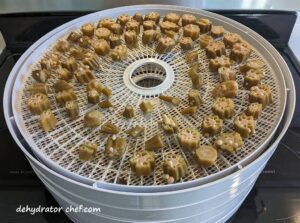
Dehydrate the Okra
- Set the dehydrator thermostat temperature to 135 °F (57 °C). Dry for 8 to 12 hours until done.
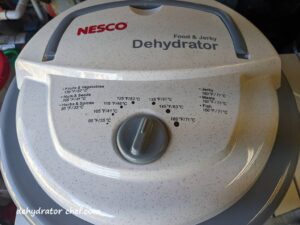
When is the Dehydrated Okra Done
- When done, the dehydrated okra will be crisp and brittle. There should be no wet or mushy pieces.
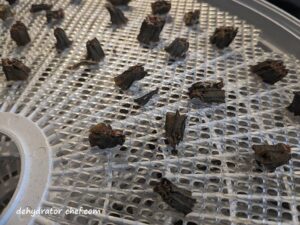
Equalizing and Conditioning Dehydrated Okra
- After a short cooling period, loosely pack the dehydrated okra into a clean, dry canning jar with a tight-fitting lid, leaving some headspace.
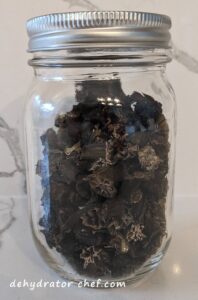
- Every day, for 7 to 10 days, check the jar for moisture. Roll the jar contents around and note any clumping or sticking. If seen, put it all back on the dehydrator for several more hours.
- If you notice any mold at all, even the slightest bit, throw it all out.
Storing the Dehydrated Okra
- Use appropriate-sized canning jars for storage. Depending on how well you dehydrate the okra and your pantry storage conditions, it should keep for at least 12 months.
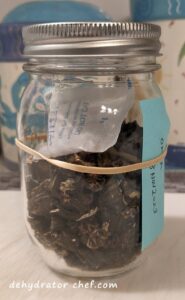
- An optional food-safe desiccant packet will aid with moisture control.
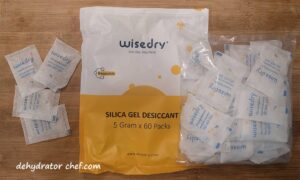
- Attach or include a label describing the jar contents and the date the product was dehydrated. The label identifies the canning jar contents, and the date helps with the rotation schedule. A first-in, first-out rotation helps us to use items that have been on the shelf the longest, so we're using the oldest food first.
Notes
Drying times will vary depending on your dehydrator and environmental conditions. Refer to your dehydrator owner’s manual for recommended temperatures and times for dehydrating specific foods. Remember to use drying times as a guide.
The product’s ingredient list may include added salt. It is assumed that some, but not all, of the sodium content would be drained away with the canning liquid, so the actual sodium may be less than shown above.
Nutrition
Serving: 5gCalories: 23kcalCarbohydrates: 4gProtein: 1gSodium: 186mgFiber: 1g
Nutrition information is only an estimate and may differ depending on the ingredients you use.
Tried this recipe?Let us know how it was!